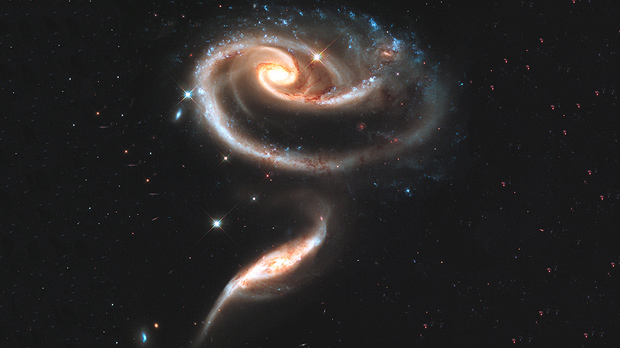‘Rose’ galaxies captured by Hubble telescope
NASA’s Hubble space telescope celebrates its 21st birthday with the release of the stunning image of two galaxies linked by a bridge of stars, creating a “rose” of galaxies.

The image shows a large spiral galaxy apparently attached to another one by a swirl of stars – a rose-like effect caused by the gravitational pull of the galaxy below it.
The sprinkling of blue jewel-like points across the top of the larger galaxy is the combined light from clusters of intensely bright and hot young blue stars. These massive stars glow fiercely in ultraviolet light.
The two galaxies, known as ARP 273, are in the Andromeda constellation 300m light years from Earth.
The picture, which was captured in December last year, shows a bridge of material between the two galaxies that are separated from each other by tens of thousands of light-years.
The image was released by NASA to celebrate the 21st anniversary of the Hubble space telescope’s deployment into space.
Hubble was launched in April 1990 aboard Discovery’s STS-31 mission, and has since revolutionised current astronomical research from planetary science to cosmology.
In its 21-year lifetime the telescope has made more than 115,000 trips around Earth, flying nearly 3 billion miles in total – which is roughly Neptune’s average distance from the Sun.
Using Hubble’s data, astronomers have published almost 10,000 scientific papers, making it one of the most productive scientific instruments ever built.
A series of heroic missions by astronauts have been made to service Hubble, helping to make it the longest-operating space observatory.
Senator Barbara Mikulski of Maryland said. “Its jaw-dropping images have rewritten the textbooks and inspired generations of schoolchildren to study math and science. It has been documenting the history of our universe for 21 years.”